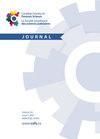A multiple predictive tool approach for phenotypic and biogeographical ancestry inferences
IF 0.5
Q4 MEDICINE, LEGAL
Canadian Society of Forensic Science Journal
Pub Date : 2021-12-29
DOI:10.1080/00085030.2021.2016206
引用次数: 0
Abstract
Abstract Phenotypic and biogeographical ancestry predictions for 128 Canadians with various self-reported ancestries, generated using the ForenSeq™ DNA Signature Prep kit/Primer Mix B and VEROGEN’s Universal Analysis Software (UAS) v1.3, were compared to predictions derived from the ERASMUS v2.0, Snipper Application v2.5, Forensic Reference/Resource on Genetics knowledge base [FROG-kb] ©2019 and STRUCTURE v2.3.4, web tools. Performance metrics were calculated for all tools tested. The UAS v1.3 eye color predictions were determined to be accurate (91.8% for brown, 82.4% for blue) with no need to complement results with any other predictive tools. For hair color predictions, the UAS v1.3 was accurate for black (93.5%), for red (80.0%) but limited for brown (50.0%) and for blond (31.3%) using the Highest Probability Approach. The ERASMUS web tool could complement the UAS results using a revised Prediction Guide Approach. Non-admixed individuals with ancestries from Africa, East Asia or Europe were predicted with 79.7% accuracy using the UAS v1.3. Admixed individuals and those with ancestries from India, the Middle East and South America were better classified using Snipper, FROG-kb and STRUCTURE. Complementing UAS v1.3 predictions with those obtained from open access web tools thus represents a way to maximize information derivable from unknown samples.表型和生物地理祖先推断的多重预测工具方法
使用ForenSeq™DNA Signature Prep kit/Primer Mix B和VEROGEN的通用分析软件(UAS) v1.3生成的128名具有各种自我报告祖先的加拿大人的表型和生物地理祖先预测,与来自ERASMUS v2.0, Snipper Application v2.5, Forensic Reference/Resource on Genetics知识库[FROG-kb]©2019和STRUCTURE v2.3.4, web工具的预测进行比较。计算了所有测试工具的性能指标。UAS v1.3眼睛颜色预测被确定为准确的(棕色为91.8%,蓝色为82.4%),无需使用任何其他预测工具补充结果。对于头发颜色的预测,使用最高概率方法,UAS v1.3对黑色(93.5%)、红色(80.0%)的预测是准确的,但对棕色(50.0%)和金发(31.3%)的预测是有限的。ERASMUS网络工具可以使用修订后的预测指南方法补充UAS结果。使用UAS v1.3预测具有非洲、东亚或欧洲血统的非混血个体的准确率为79.7%。混合个体和祖先来自印度、中东和南美的个体使用Snipper、FROG-kb和STRUCTURE进行了更好的分类。因此,用从开放访问web工具获得的预测来补充UAS v1.3预测,代表了一种从未知样本中获得最大信息的方法。
本文章由计算机程序翻译,如有差异,请以英文原文为准。
求助全文
约1分钟内获得全文
求助全文

 求助内容:
求助内容: 应助结果提醒方式:
应助结果提醒方式:


